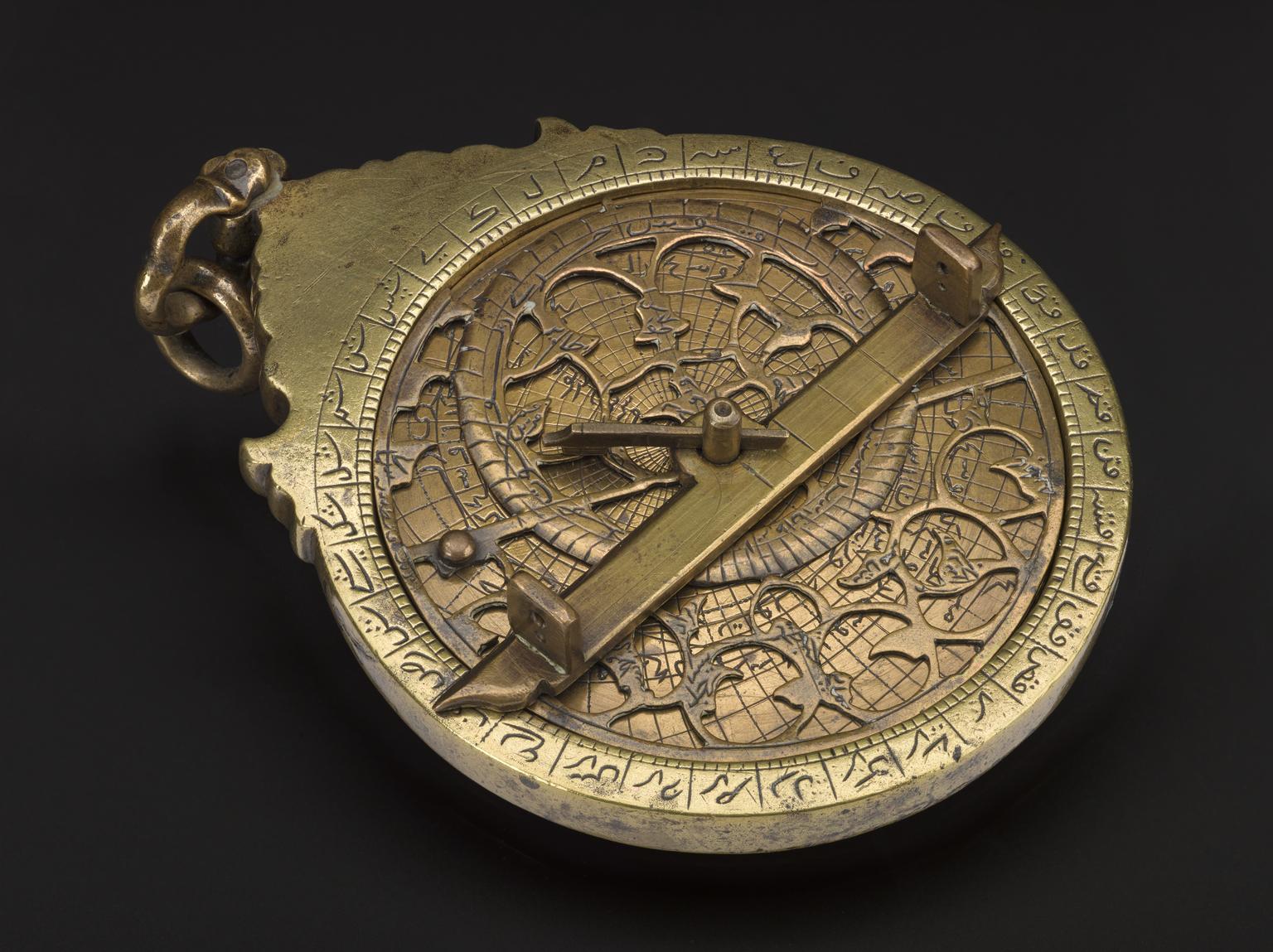`Abd al-Rahman al-Sufi (also known by the Latinised name Azophi) wrote his famous star catalogue, the Book of the Fixed Stars (Kitāb Ṣuwar al-kawākib al-thābitah), around 964 AD. It enlarged and revised the Almagest, the work of the great 2nd century AD Alexandrian astronomer Ptolemy. Al-Sufi’s star catalogue added illustrations of the constellations, along with new material, including Al-Sufi’s own astronomical observations.
Most of the individual star names still in use today derive from Al-Sufi’s star catalogue, easily recognisable from their Arabic terminology including Aldebaran, Algol, Betelgeuse, Rigel and Vega, albeit in a slightly Latinised form. It is why the majority of our individual star names are Arabic (with a few in Greek and some of unknown origin). These Arabic names on the whole come from the stars listed by Ptolemy (with their Arabic rather than the original Greek names) and the ones added by Al-Sufi to his star catalogue.
‘Fixed star’ was the name given to visible celestial objects which appeared not to move in relation to each other. The Sun was not considered a fixed star but instead considered a ‘wandering star’ along with the Moon and the five planets known at the time, which were understood as orbiting in epicycles around the Earth.
In this geocentric model of the universe, nesting rotating celestial spheres (like a set of Russian dolls) surrounded the Earth. The first seven spheres were the spheres of the ‘wandering stars’, in order of proximity to the Earth: the Moon, Mercury, Venus, the Sun, Mars, Jupiter, and Saturn. All of the fixed stars resided on the aethereal surface (attached like pin tacks) of the eighth sphere (the largest nesting doll as it were).
Al-Sufi worked as astronomer in the employ of ‘Adud al-Dawla (949–82), the Buyid caliph. The Fars Buyids were a tribal confederation that held sway over much of the area that is now Iran and Iraq during the 9th and 10th centuries. The Buyid rulers were very interested in astronomy and astrology, and funded an observatory in Shiraz (Iran) where Al-Sufi carried out his observations. In his Book of the Fixed Stars, Al-Sufi described all the stars he knew (1,022, including the 48 classic constellations) with their positions, magnitudes, colour, comments on observations and illustrations.
Al Sufi used a variety of methods, apart from the naked eye, for his observations. He used a metal circle measuring 125 centimetres in radius to measure the inclination of Earth’s equator with regards to the orbital plane of the earth (known as the obliquity of the ecliptic).
He worked out the latitude and longitude of celestial bodies on the ecliptic with the aid of an equinoctial armillary sphere. This was an instrument of six rings. The outer fixed ring was set to be perpendicular to the horizon and that parallel to the actual meridian, thus fixing the current latitude of the observer. Then two rings would be used to fix on a celestial object whose celestial longitude was already known. Two other rings would be used so that the longitude and latitude of the celestial object of interest could be measured.

In Al-Sufi’s star catalogue, these measurements were listed along with other data such as the magnitude, or the brightness, of each individual star. The star catalogue also had illustrations of most of the 48 classic constellations. Each constellation was depicted as they appeared on the celestial sphere (that eighth sphere of fixed stars ) and the celestial globe (which focuses on the experience from Earth: each depiction being a mirror image of the other, each representing either us looking at the stars from earth or their position to an imaginary viewer looking at them from above the sphere of the fixed stars).
Al-Sufi also improved the estimates of magnitude of each star, updating the previous estimates of Ptolemy and Hipparchus (an earlier astronomer that Ptolemy had used when describing stars). Apart from the Book of the Fixed Stars, Al Sufi also wrote an astronomy handbook and a treatise on the astrolabe. Astrolabes are astronomical instruments used to show the stars’ position, and which could then be used to tell the time and find directions.

Al-Sufi is most famous for writing the first historical reference to the Andromeda Galaxy. In his notes on the constellation of Andromeda, Al-Sufi records ‘a little cloud’ or ‘nebulous smear’ (al-latkhā al-sahābiya). The cluster is depicted as a series of black dots around the mouth of a fish near Andromeda’s body (Al Sufi combined here the classical Greek constellation of Andromeda with the Arabic constellation of two fish). It is the earliest known reference to a galaxy other than the Milky Way.

Al-Sufi’s work became a standard astronomical reference work and was still key in the early modern period. Even today his Book of the Fixed Stars is testimony to the motion and brightness of certain stars over the last thousand years.
